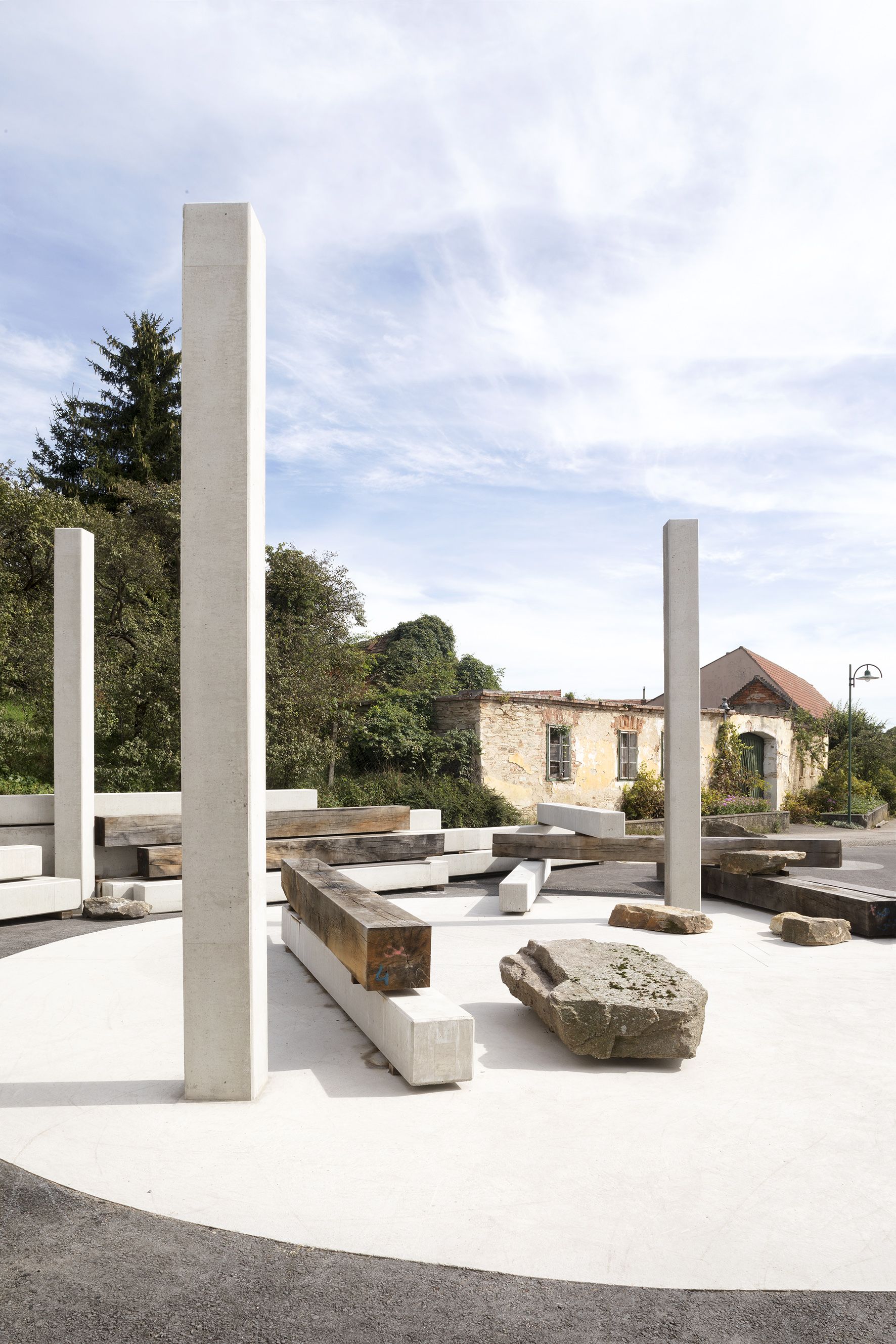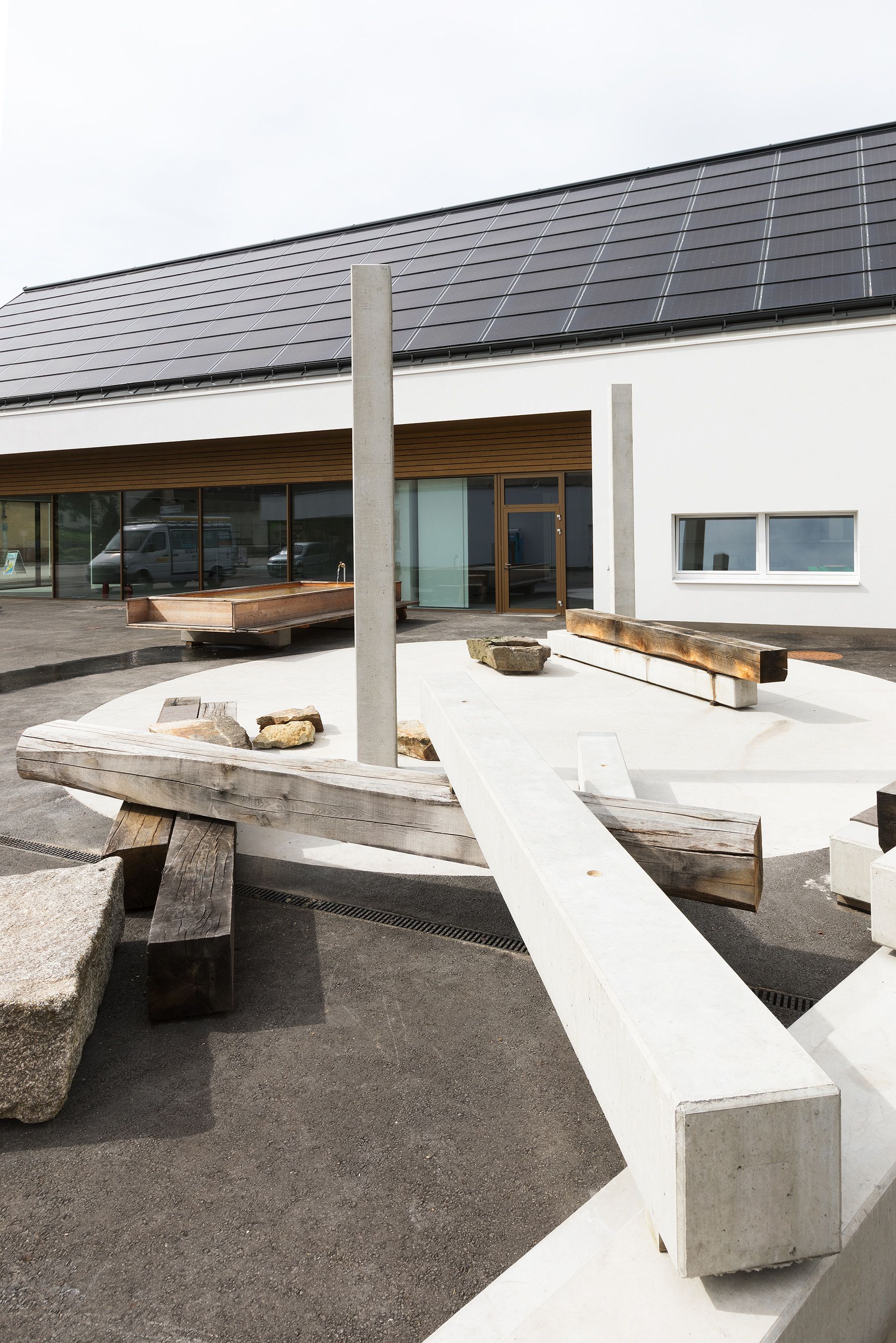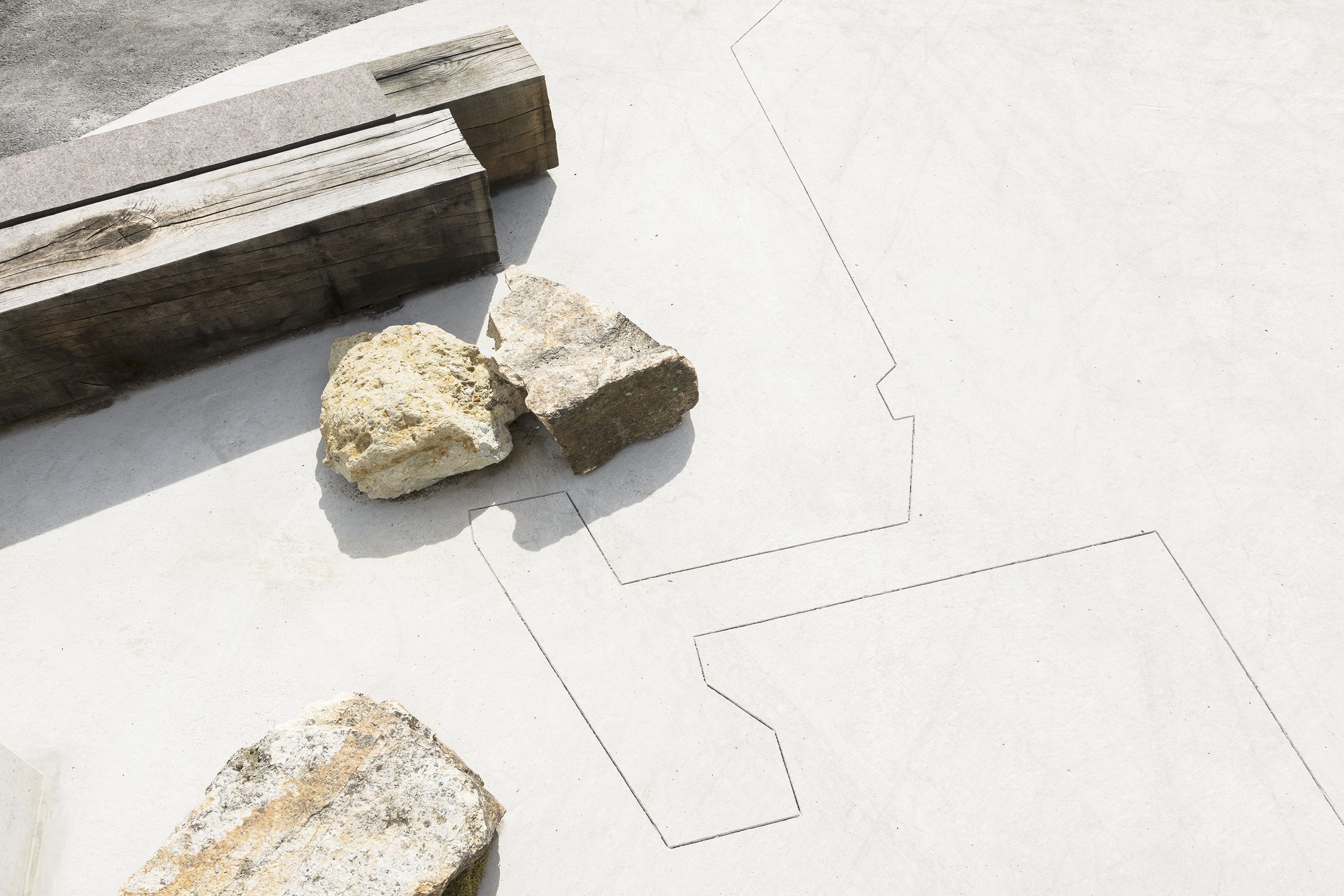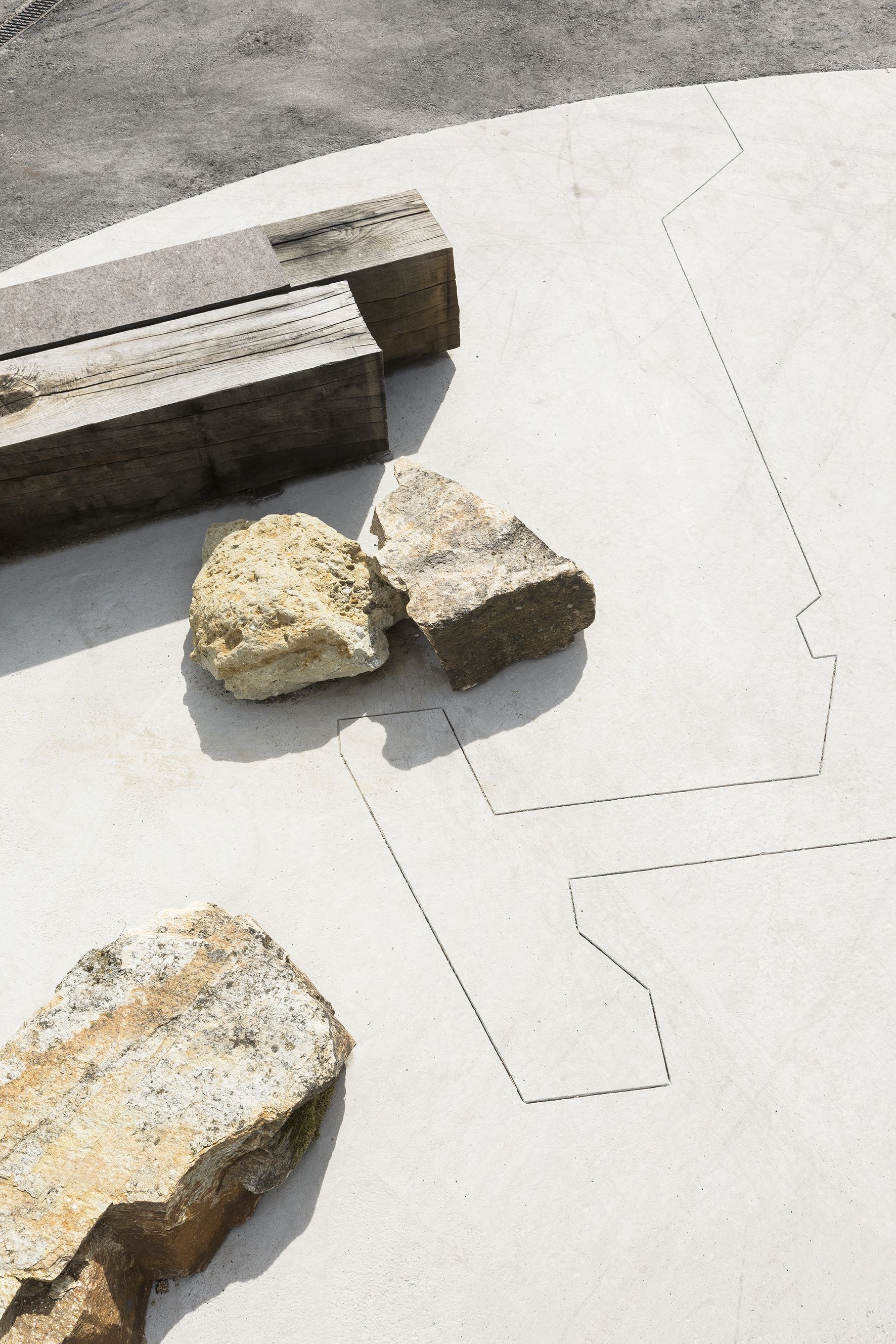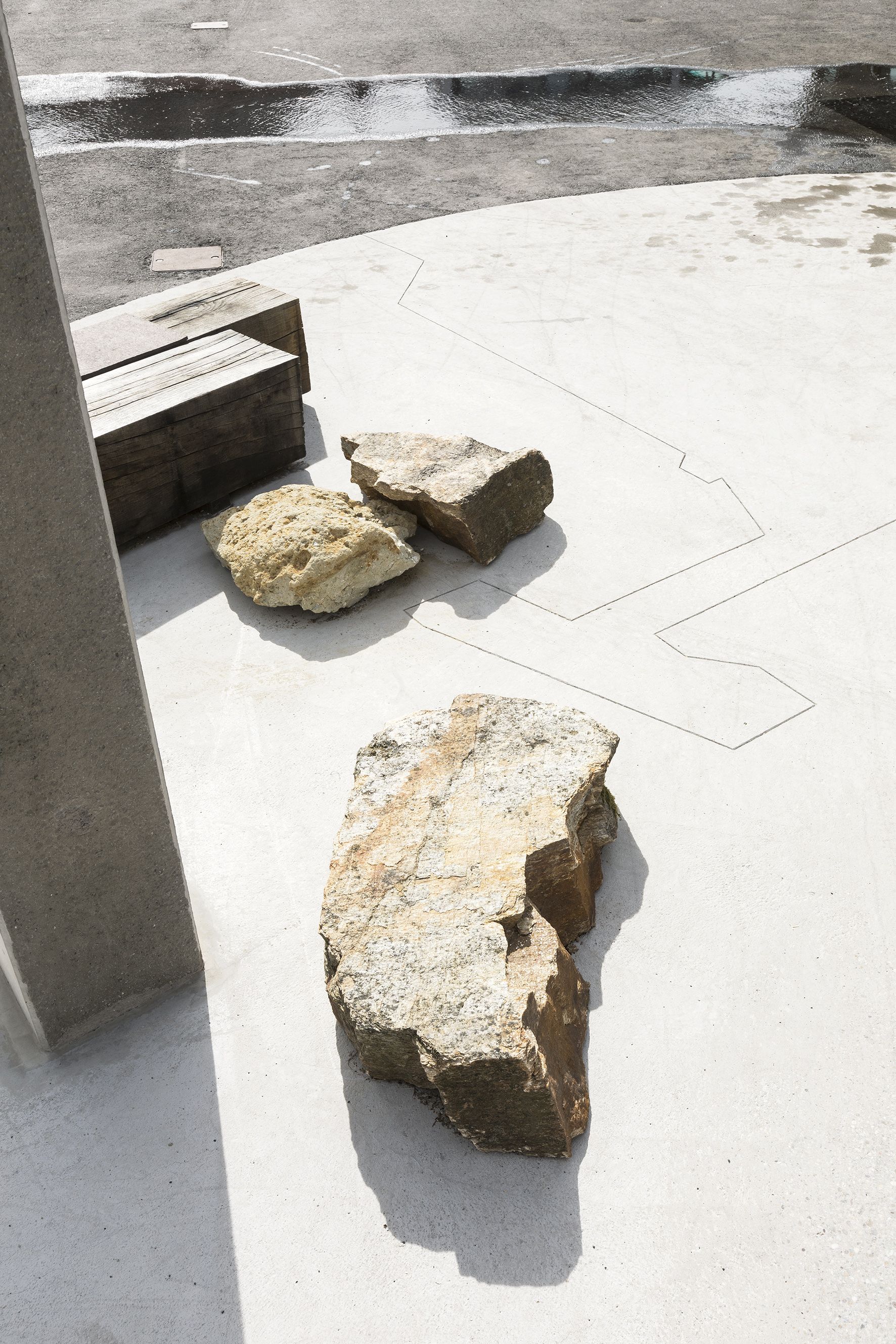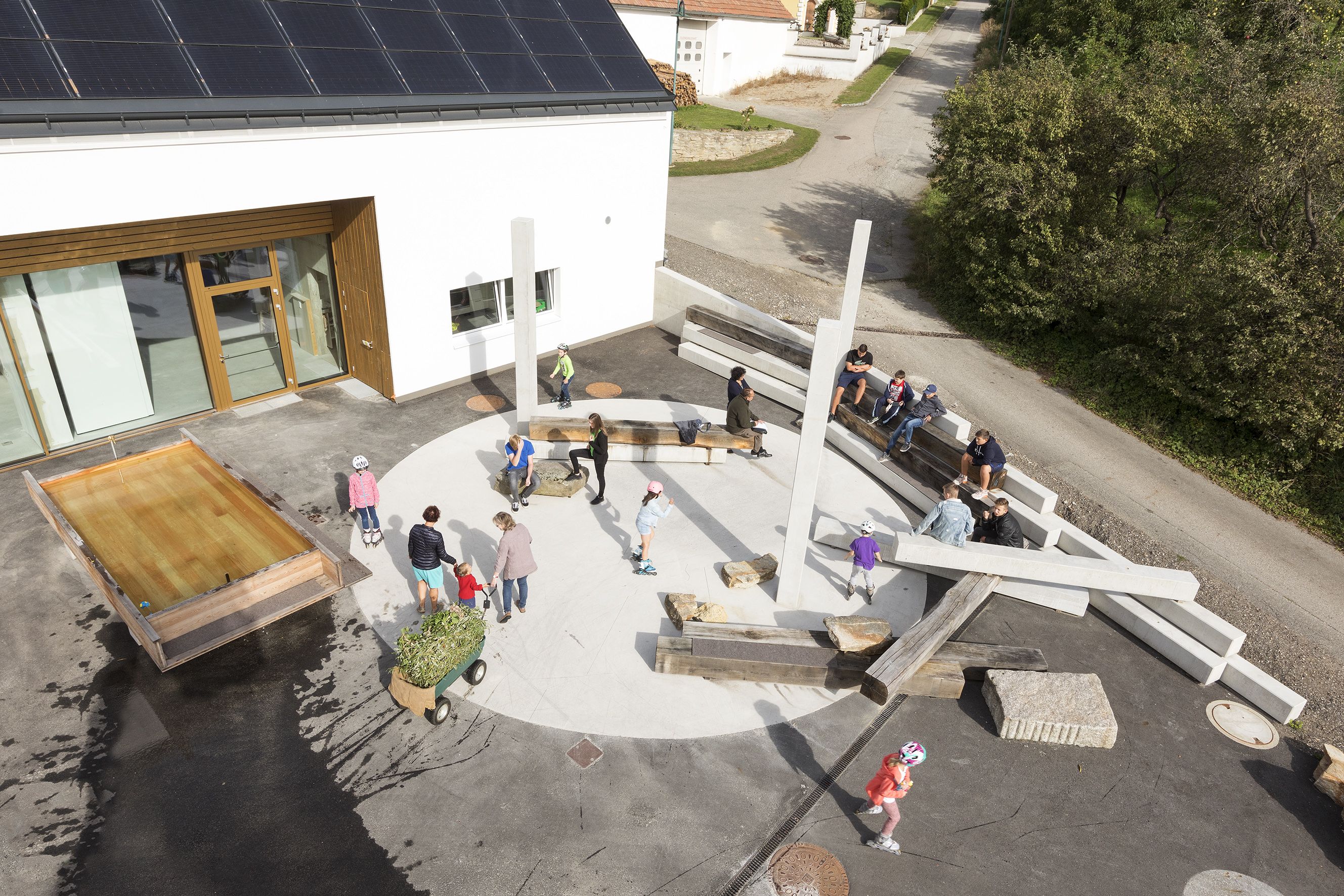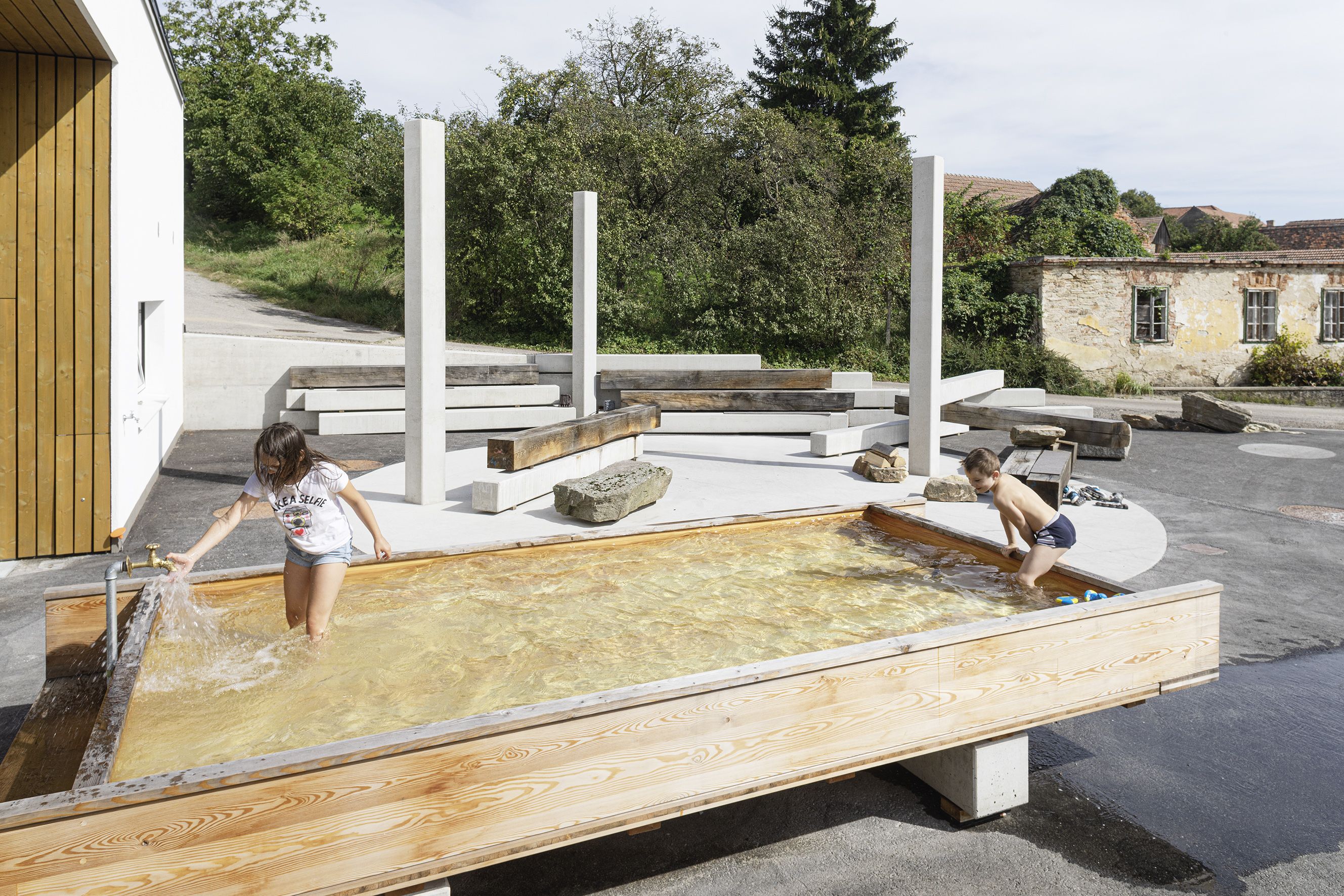Nicole Six,
Paul Petritsch
:
Feuerstelle
Back
Information
Get water or just sit down; parking space and water basin; cold drinks and cooling your feet; barbecue pit and village parties; a place for young people to get together next to the youth center; erect the maypole together; celebrate the passing of seasons—Easter bonfire and summer solstice party; monitor wind direction; show ratio between Earth and moon; look North, East, South, and West; commemorate history of the area—the Eggenburg Sea.
Nicole Six and Paul Petritsch; together with Florian Hofer, Feuerstelle (Campfire Circle), 2020
The gurgling water and sitting blocks are calling you to come and get a nice fire going on the campfire circle!
Village squares are social and communicative spaces that stand for community. They are also used for social gatherings. Busy, lively public squares—with children playing, people sitting outside at cafés or under shady trees—are usually places we identify with southern countries. In more northern regions, village squares are often treated like left-over space in the rural environment, full of parked cars that are only moved when its time for a village festivity or the weekly market.
Until recently, Klein-Meiseldorf, located in the Waldviertel region near Vienna, was a small town built alongside a village green and road. It had no lively village square or even one full of parked cars. It simply had no square at all. Also, its local shop, café, event location, meeting place for young people, and post office had closed one by one over the last few years. But Klein-Meiseldorf is a community of extraordinarily people with commitment and stamina. The inhabitants spent several years discussing what they needed and wanted. They came to the conclusion that they wanted a community center, a hall for holding events, a youth center, a grocery shop, a small café, and a public square that could be used in many different ways. Before the center could be built, at least one old building had to be demolished and the ground level raised. This required much sweat, muscle power, and time from the roughly 80 dedicated members of the local association that was responsible for renewing the village.
Today, the new village center is complete. It consists of opposing elements: glass exteriors contrast with wood, freshly laid plaster with walls tanned by the sun, and a shiny photovoltaic roof with tiled roofs. There is also a charging station for electric devices, and in-between an open area. On one side of the area is the grocery shop with a café as well as a room for youth activities in the basement. On the other side is the event hall, which is now open and was built mostly by the villagers in a huge feat. In the rear of the newly created square lie several bulky wooden beams and concrete elements pointing every which way next to a gurgling fountain. The fountain’s water basin is the size of the parking space that was retired by the village council so that it could be used by the general public to play in and cool themselves off in the water instead.
The square is defined by elements designed by the artist duo Nicole Six and Paul Petritsch. Their design proposal was the winner of an invitation-only call to artists organized by Public Art Lower Austria. Six and Petritsch have developed a space full of possibilities with a structure for social life. The design of the square is essentially based on three elements that anchor it in several underlying narratives about humanity and our relationship to the world. The components are designed to promote the shared use of the square and consist of a campfire circle on polished concrete, a fountain made of larch wood the size of a parking space, and scattered heavy oak beams and prefabricated concrete elements to sit on. The moveable elements can be playfully rearranged with tractors and forklifts. They can be stacked like oversized Mikado sticks, or they can be moved around to serve as seats, stands, a bar, or as demarcations, according to the village’s needs.
The square features three vertical concrete pillars. In one corner is a charging station for mobile phones and laptops disguised as rock, Flintstones-style. There are also several rocks from the nearby quarry as well as the historical sandpit near Kühnring, where the skeletons of a herd of manatees were found that lived there 20 million years ago on the coast of the tropical Eggenburg Sea. The result is a layering of, or juxtaposition between, different objects and references that raise our awareness of the various levels of time.
The central element of the design is the campfire circle. A light gray concrete circle is embedded in the asphalt, representing Earth. Lying on it like a shadow is the moon—a polished concrete circle where villagers can lite a campfire. Light and shadow, fire and night blend with a sense of wistfulness, as people sit around the fire, staring into the flames, roasting wieners on a stick, staying after the sun goes down, alone or in a lively group. In a way, fire has become almost invisible in our society. The stove has replaced the fire pit, while warmth, for the most part, comes from central heating. Even a pellet stove conceals fire in the furnace. And still, we long for this archaic thing, for the romantic feel of the camp fire. In their design, Six and Petritsch place in the middle of the village what otherwise takes place outside of it at one of the lakes nearby. There, you find charred stones arranged in circles to create fire pits, possibly put there by young people who want to hang out together at night.
Water and fire are two opposite elements of life that come together in the village square. The fountain made of larch wood is about as deep as a case of beer and as large as a car. It is also mobile, and the basin can be modified. Like campfires, fountains are also somewhat of a cultural artifact these days. In the olden times, however, they were absolute necessities and were often the only source of fresh water in the village. They were also places where people met and talked to one another. The new fountain in Klein-Meiseldorf also encourages people to meet and talk. It is framed by a bench that invites you to sit or climb over into the basin to cool your feet or dip your arms into on hot days. Children can splash around in it as much as they like. Or you can also let a toy boat sail in it.
The village reflects the world at a small scale. Six and Petritsch’s design also asks us who we are, what was here before us, and how humans can find their place in the world and in time. While two smaller circles of concrete hint at other planetary systems, engraved into the “Earth” is also the international date line, aligned from north to south, as a human principle of global orientation. The entire square is a rough narrative system consisting of the four cardinal directions, time and its passing. Concrete, which is a contemporary material used in the construction industry, is placed next to the primordial granite from the region, which refers to the hundred million years of developmental history defining the landscape. Concrete and granite are both sought-after materials in today’s globalized world, though the latter is now quarried somewhere else. In essence, the square represents a cluster of references to different levels and orders of time, to our relationship to the world, to primordial time, to the Eggenburg Sea, globalization, the recording of time, day and night, today and yesterday, handicraft and industrial production, solar energy and fire. This loose chain of associations hints at existential questions that could well be reflected on while sitting around the fire, but otherwise do not need to bother anyone cruising across the square on a bike or in roller-skates, on their way to the here and now.
Images (9)

